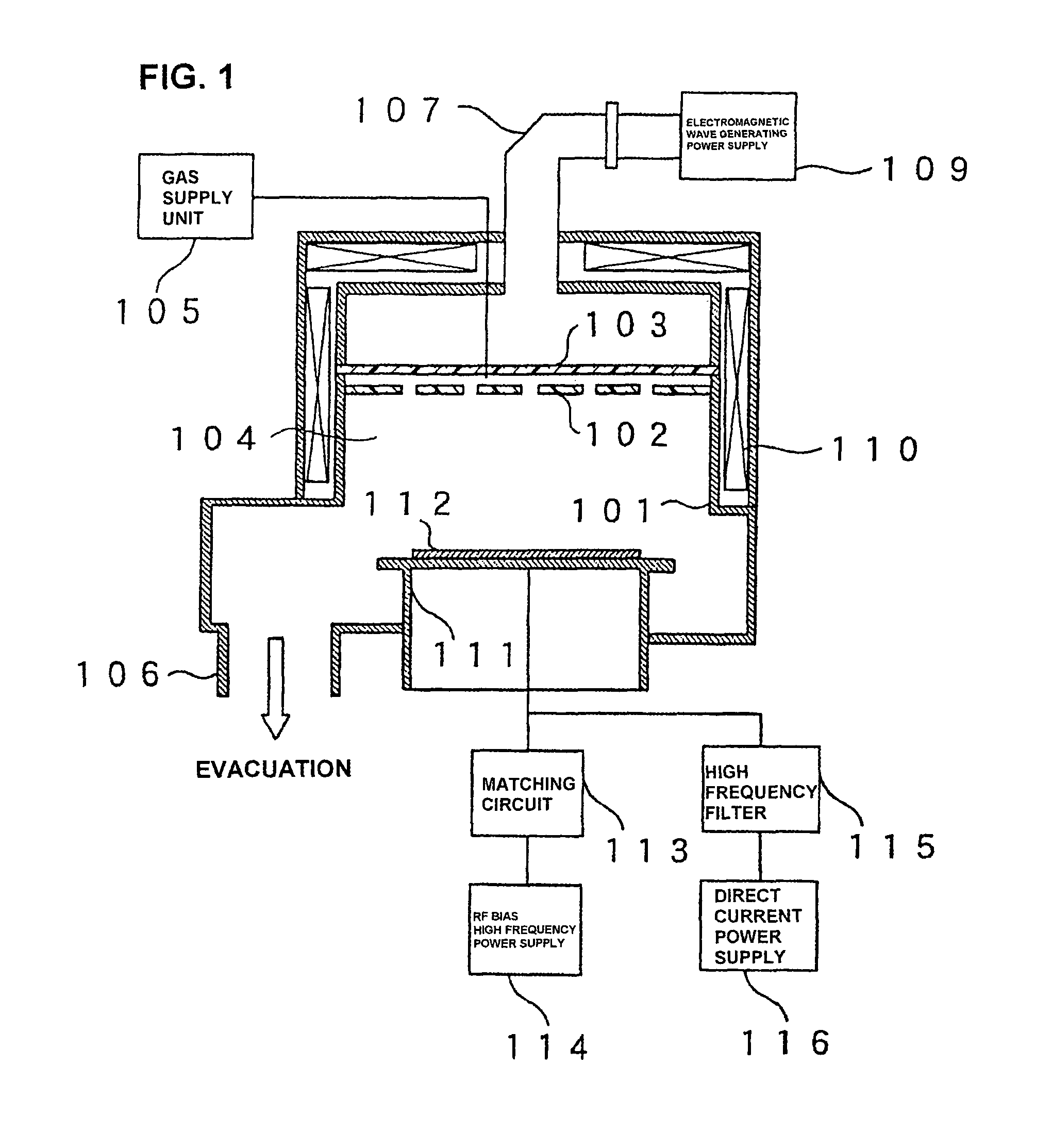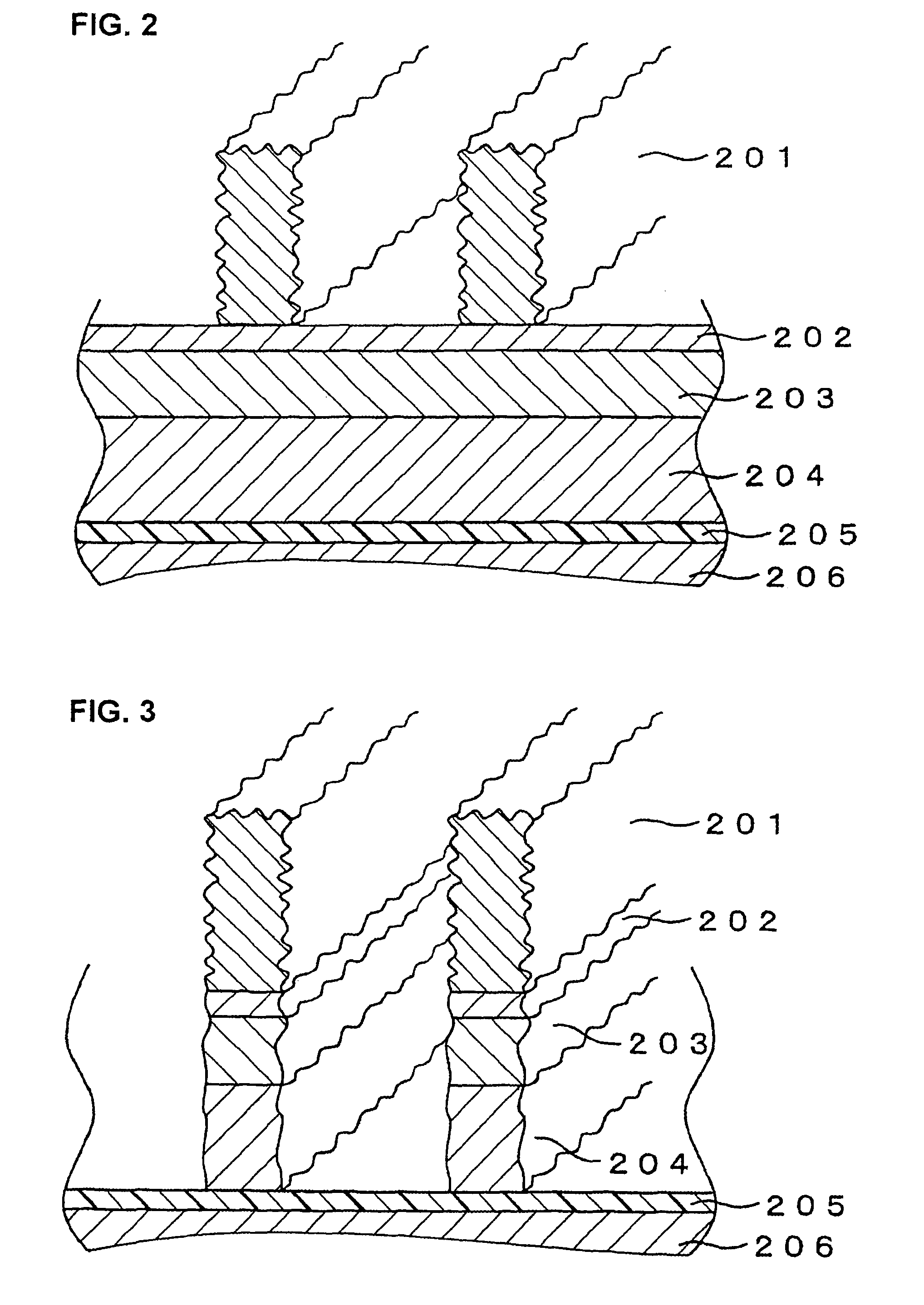Plasma processing method
a processing method and technology of plasma, applied in the field of plasma processing methods, can solve the problems of uneven exposure, unwanted roughness formation on the surface and side walls of the formed circuit pattern of the photoresist, and unnecessary exposure of the photoresist material, so as to reduce the thickness, improve the lithography resolution, and reduce the effect of roughness
- Summary
- Abstract
- Description
- Claims
- Application Information
AI Technical Summary
Benefits of technology
Problems solved by technology
Method used
Image
Examples
embodiment 1
[Embodiment 1]
[0051]Next, the plasma processing method for performing etching using plasma according to a first embodiment of the present invention will be described with reference to FIGS. 5 through 8.
[0052]According to the plasma processing method of the present invention, with respect to the photoresist mask pattern 201 having roughness on the surface and side walls thereof, a plasma curing process is performed to reduce the roughness on the surface and side walls of the photoresist mask pattern 201 as a pretreatment for etching the laminated thin films disposed below the photoresist mask pattern. FIG. 5 illustrates the shape of the material being processed after generating plasma from nitrogen gas and performing a plasma curing process. By performing a plasma curing process, it becomes possible to reduce the roughness on the surface and side walls of the photoresist mask pattern 201 caused by exposure and development of the photoresist material, and therefore, the laminated thin...
embodiment 2
[Embodiment 2]
[0072]A second embodiment of the present invention will now be described with reference to FIG. 10. Only the features that differ from embodiment 1 are described hereafter. FIG. 10 shows a deposition gas flow rate dependency of the LWR and the vertical etching rate of the photoresist material when deposition gas is added to nitrogen gas as the processing gas of the plasma curing process. Heretofore, when a curing process is performed by using only deposition gases, elimination of lactone groups of the photoresist did not occur, and the roughness of the photoresist surface could not be reduced. In the present embodiment, a gas including methane gas diluted by rare gas is used as the deposition gas. When the quantity of the deposition gas being added is increased, the vertical etching rate (1002) of the photoresist material during the plasma curing process is reduced. However, even when the quantity of added deposition gas is increased, the LWR (1001) is not substantiall...
PUM
| Property | Measurement | Unit |
|---|---|---|
| RF bias power | aaaaa | aaaaa |
| processing temperature | aaaaa | aaaaa |
| processing temperature | aaaaa | aaaaa |
Abstract
Description
Claims
Application Information
 Login to View More
Login to View More - R&D
- Intellectual Property
- Life Sciences
- Materials
- Tech Scout
- Unparalleled Data Quality
- Higher Quality Content
- 60% Fewer Hallucinations
Browse by: Latest US Patents, China's latest patents, Technical Efficacy Thesaurus, Application Domain, Technology Topic, Popular Technical Reports.
© 2025 PatSnap. All rights reserved.Legal|Privacy policy|Modern Slavery Act Transparency Statement|Sitemap|About US| Contact US: help@patsnap.com



